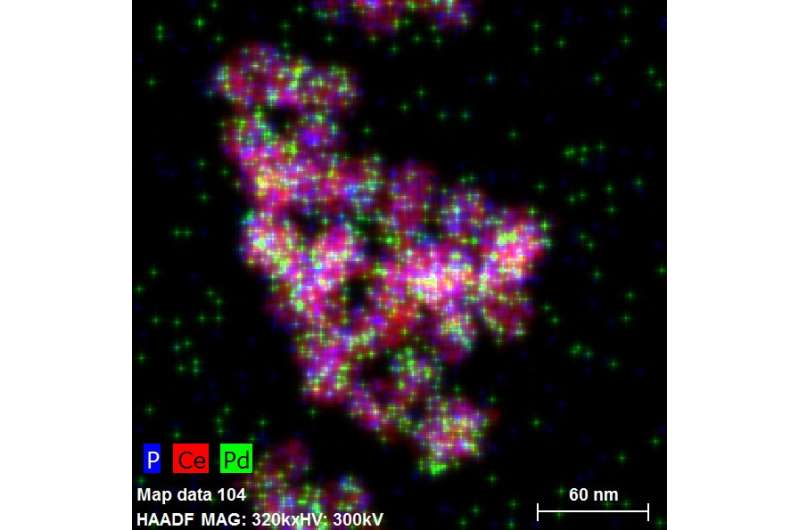Surrounded by potential: New science in converting biomass

In every plant—from trees to crops—there exists a substance that makes up its wood or stems, fiber, and cell walls. This substance is a complex natural polymer called lignin, and it is the second largest renewable carbon source on the planet after cellulose.
This natural abundance has drawn high interest from the research community to chemically convert lignin into biofuels. And if plant life really does hold the building blocks for renewable fuels, it would seem that we are literally surrounded by potential energy sources everywhere green grows.
But untangling the complex chains of these polymers into components, which can be useful for liquid fuel and other applications ranging from pharmaceuticals to plastics, has presented an ongoing challenge to science and industry.
There are currently two common ways of processing lignin. One requires an acid plus high heat, and the other is pyrolysis, or treating with high heat in the absence of oxygen. Besides being energy-consuming processing methods, the results are less than optimal.
"You end up with individual molecules that are unstable and reactive, and they easily re-polymerize. It's kind of a horrible mess, really," explains Igor Slowing, an expert in heterogeneous catalysis at the U.S. Department of Energy's Ames Laboratory. "We need to be able to deconstruct lignin in a way that is economically feasible and into stable, readily useful components."
Slowing and other scientists at Ames Laboratory are working to reach that commercialization goal, experimenting with chemical reactions that decompose lignin models at low temperatures and pressures. There are already known ways of salvaging useful byproducts out of lignin through the addition of a stabilization process. But Slowing and his research team took both the decomposition and stabilization processes further, by combining the two into one multi-functional catalyst, using phosphate-modified ceria.
"Our process does the breaking of lignin-like material and the stabilization in a single step in very mild conditions," said Slowing. "The interesting thing is that though there are two different types of chemical processes happening in a single material, they appear to be working synergistically, and are able to do that at a lower temperature."
In another experiment, Slowing's research team was able to process a related material, phenol, into useful industrial precursors for nylon production. This work used a catalyst made of ceria and palladium doped with sodium, which increased the reactivity of the process significantly. They also eliminated the use of hydrogen, which is produced from steam-treatment of natural gas, and used an energy-conserving alcohol-based hydrogenation process instead.
Research continues. "Both of these results were very promising, and our next step is to combine the two experiments into one, and achieve lignin deconstruction using hydrogen from a renewable source," said Slowing.
More information: Nicholas C. Nelson et al, Phosphate modified ceria as a Brønsted acidic/redox multifunctional catalyst, J. Mater. Chem. A (2017). DOI: 10.1039/C6TA08703E
Nicholas C. Nelson et al. Transfer hydrogenation over sodium-modified ceria: Enrichment of redox sites active for alcohol dehydrogenation, Journal of Catalysis (2017). DOI: 10.1016/j.jcat.2016.12.018
Journal information: Journal of Materials Chemistry A
Provided by Ames Laboratory














